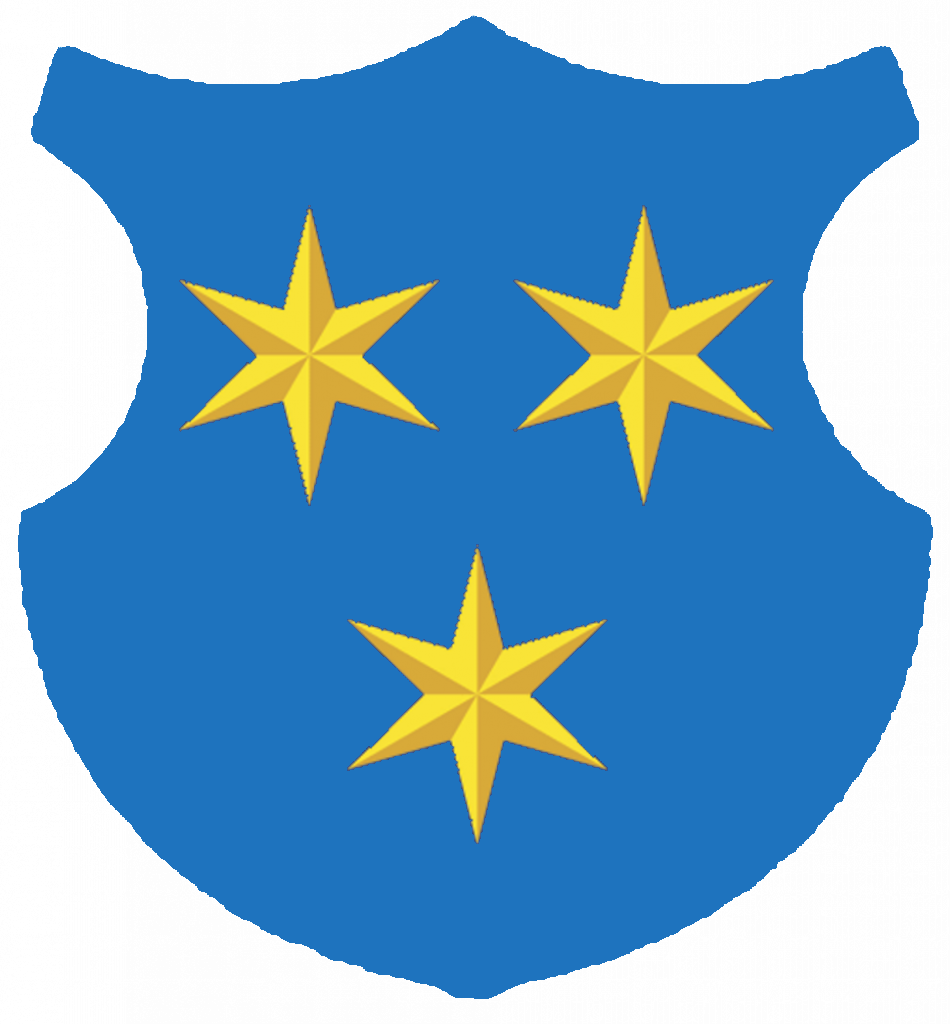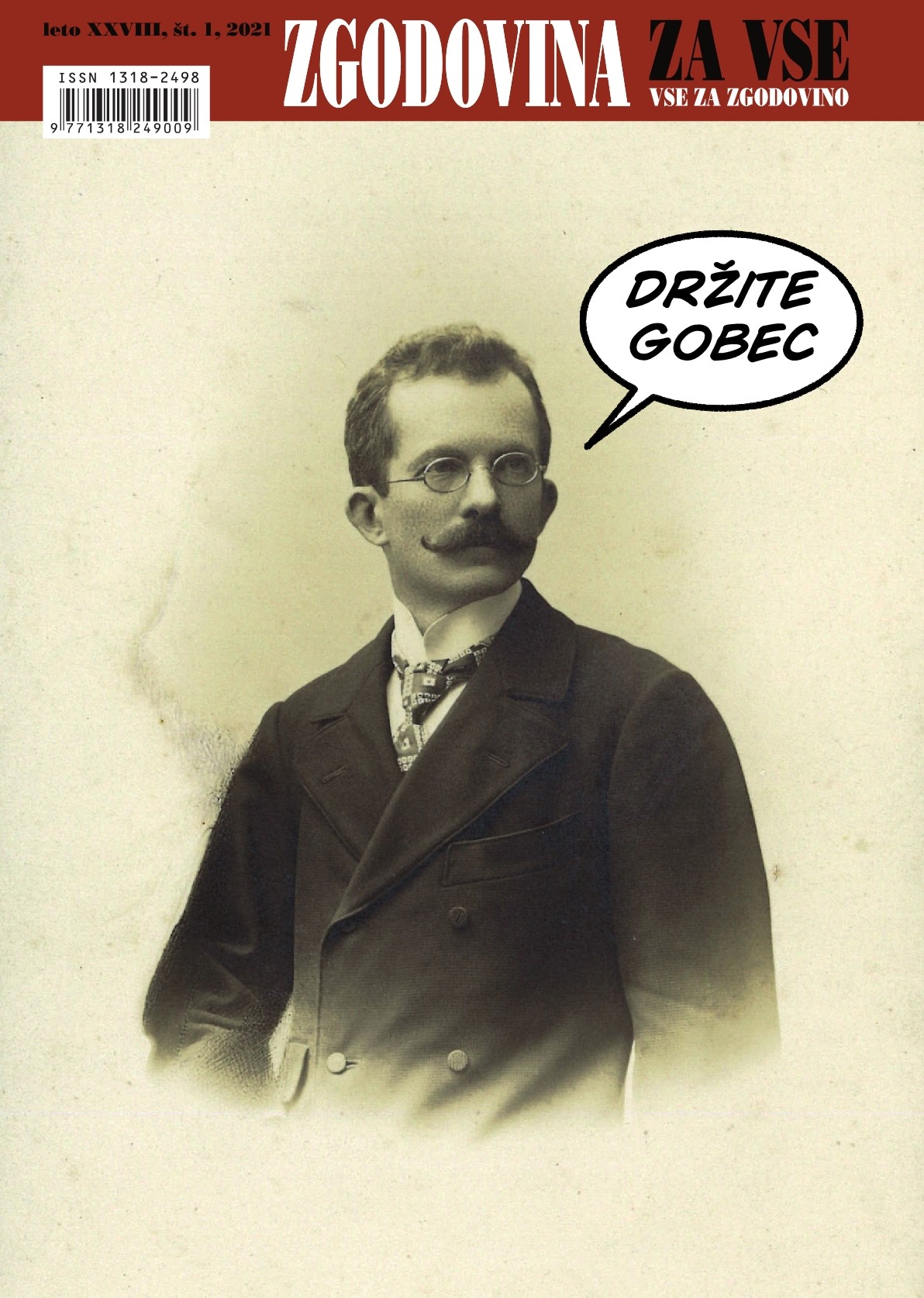History for Everyone 1/2021
Filip ČUČEK
“Keep your mouth shut”
Dečko’s second term of office in the regional assembly (1896-1902)
The subject of the article is the speeches of Ivan Dečko, member of the Regional Assembly of Lower Styria, during his second term of office (1896-1902). The introduction of parallel classes in Slovenian at the Celje grammar school in 1895 sent shockwaves among Germans throughout the monarchy, ultimately forcing the Windischgraetz government to step down. Following Badeni’s language ordinances in 1897, which met with a fierce response on the German side, Lower Styrian Germans vigorously responded to every effort made on the Slovenian side. This became most apparent during the visit of Czech university students to Celje in 1899. German-Slovenian tensions had become omnipresent by the turn of the century, the Germans holding the upper hand in the national struggle, which they regularly used to their advantage. A growing ethnic conflict also became evident in the regional assembly in Graz.
Kathryn E. DENSFORD
The Wehrmann in Eisen
A Measure of Wartime Support on the Habsburg Home Front
During the First World War, large nailed monuments were unveiled across Austria-Hungary beginning in early 1915. These objects took various forms, but the most common were medieval knights or shields. I analyze these
monuments as a Habsburg-wide phenomenon to argue that they served an important function in the Habsburg wartime project promoting patriotism and upholding traditional gendered social order. Analysis of these monuments’ forms and their functions—rallying wartime patriotism, raising war funds, encouraging loyalty to the emperor, and memorializing the war dead—demonstrates how imperial and local officials employed these masculine-formed objects in efforts to generate patriotism and loyalty to the Monarchy. The monuments and the celebrations connected to them exemplify Habsburg and local authorities’ wartime efforts to maintain traditional gendered social order through the symbol of the male warrior and notions of chivalry and sacrifice.
Urh FERLEŽ
“Today, we ‘Savinci’ are going out”
Military and literary traces of Maister in Celje
Rudolf Maister, general and artist, stayed in Celje for several months between 1913 and 1914. He was commander of the “Black Army” battalion. Although his stay was brief, he made some close friends in Celje. He participated in cultural life and wrote several poems in the same period. Particularly important was his collaboration with a group of grammar school students who were part of the Kondor literary society. Maister was a role model and mentor for the students, helping them with the Savinja literary magazine. After five issues, World War I broke out and Maister had to leave Celje, which put an end to the magazine. The students primarily wrote poetry, the poems of Fran Roš and Srečko Puncer standing out for quality. Celje has honored Maister and Kondor with a commemorative plaque placed on the wall of the I. gimnazija building.
Franc KRIŽNAR
“He lived and worked between the German and Slovenian cultures”
Josip Ipavec (1873-1921)
The author lists all relevant biographical and bibliographical facts that raised the last member of the dynasty of four medical doctors and Slovenian-Celje Ipavci composers (Alojz, Benjamin, Gustav in Josip) to the European level of music artistry. Josip Ipavec (1873-1921), the centenary of whose death is commemorated in 2021 with the National Year of Ipavec, underwent the most thorough formal music training, even though none of the four received any professional training in composition. Josip was also the only one whose vocal pieces (Lieder and choirs) was mostly composed for lyrics in German, including those by such prominent (European) poets as H. Heine, J. W. v. Goethe, E. Geibel, L. Uhland, N. Lenau, E. Schönaich-Carolath, and J. Rodenberg. Undoubtedly, the crown jewel of Ipavec’s music oeuvre remains the ballet-pantomime Možiček (Little man), the first Slovenian ballet piece; less successful if not unsuccessful was his opera/operetta Princesa Vrtoglavka (The giddy princess).
Marija Mojca PETERNEL
“She introduced democracy to fashion”
Gabrielle Chanel in contemporary newspapers
The article is based on newspaper articles published in the period between the world wars. The scope and diversity of articles published across a wide spectrum of newspapers – primarily in Vienna – makes a positive impression, the number of articles suggesting the artist was very intriguing to the press. A collage of newspaper articles also touches upon less familiar topics, the most prominent of which is the story of Chanel perfume featuring as the protagonist of a then famous theater piece.
Božidar JEZERNIK
A Journey from Goličava to Goli otok
The article presents the life of Jože Jurančič (1902-1998), who after completing a teacher training program, taught at various schools, mostly in remote rural areas, where the authorities deployed him as a
disciplinary measure because of his affinity for Communism. During the Second World War, the Italian occupying authorities first kept him prisoner for several months in Novo mesto and Ljubljana because of his
views, which was followed by internment in the concentration camp on the island of Rab. In the concentration camp, Jurančič first established a secret Communist Party Committee not long after his arrival and then the Liberation Front Committee (odbor Osvobodilne fronte) of the concentration camp. In September 1943, the LFC accomplished a feat that remains unique in history. Around 2,000 unarmed internees disarmed the Italian military unit on Rab, which comprised around 2,200 heavily armed
and trained soldiers and Carabinieri. Even more impressive was the fact that no soldier or Carabinieri was executed. After the war, Jurančič held several senior political positions up to 1949, when he was arrested for allegedly subscribing to Cominform.
Since he enjoyed immunity as a member of the federal parliament, he was imprisoned under a false name until his term of office ended. In 1953, he was relocated first to the Bileća concentration camp and then to Goli otok.
In 1953, the question of the boundary between Italy and Yugoslavia became a burning problem. In the propaganda war, Yugoslavia heavily underscored the plight of Rab internees and renovated the cemetery that was the final resting place for over a thousand internees. The laborers who performed the reconstruction included internees from Goli otok, among them Jože Jurančič. This meant that Jurančič helped build a monument to himself and to the unique historic event that he had led. Yet, in the ceremony that took place at the Rab memorial cemetery on 13 September 1953, no one mentioned his name, not even his closest companions from the camp’s Liberation Front organization.

